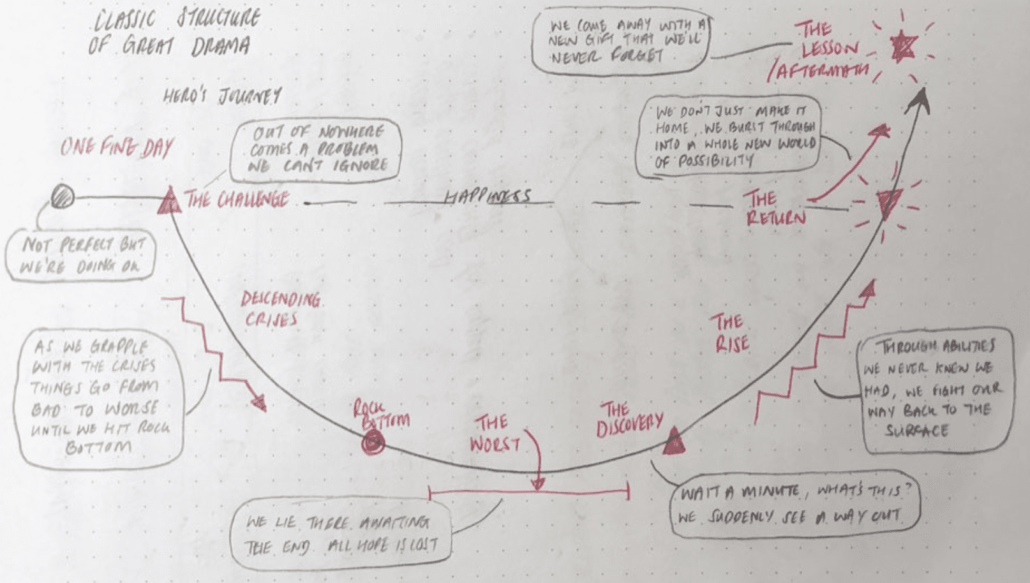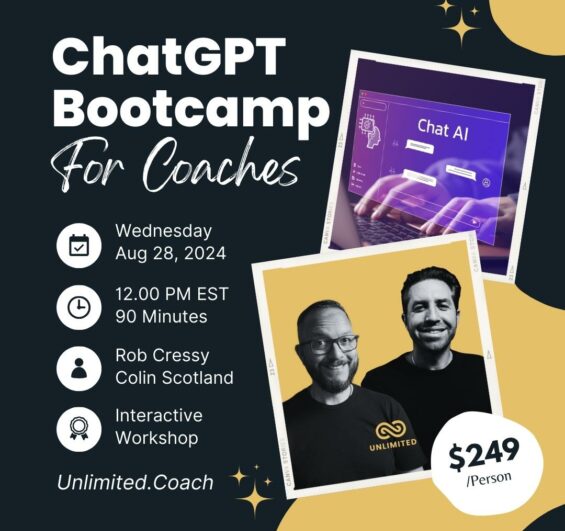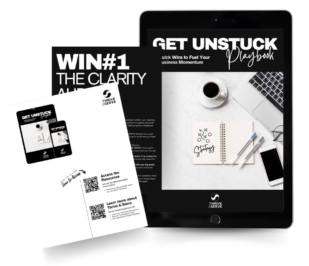Entrepreneurs and creators of all stripes need a clear roadmap to help them chart their course through the choppy waters of marketing. They don’t have the luxury of time to become an expert in marketing… so… they need a fool-proof plan that works like crazy… even if… they don’t change a single word.
Most marketing plans fail. But that doesn’t mean you have to struggle with a plan that doesn’t work… or… a plan that doesn’t give you the results you need. With this plan, you don’t have to guess what to do… OR… wonder if you are doing the right thing.
In a world of marketers and entrepreneurs, we hear a lot about marketing strategies, tactics, and plans. Some marketers have a plan; some marketers don’t. Some have a great plan; some have a great plan that works. But most of us fall somewhere in the middle: We have an idea, and we’re doing something about it, but we don’t really have a strategy or a plan. But what if there was one marketing plan you could follow—one you could implement immediately—that would make you more effective than any other?
Do you ever have trouble keeping up with your marketing? How about getting your message out there without any marketing experience? If so, this is for you.
Determine your Goals - Your Why Question
You should begin by having a clear goal in mind for what you want to achieve from your marketing. But before your marketing goals, comes your why question. When I ask the why question to clients, I usually get the response: “I don’t know,” or some other vague response that often takes minutes to articulate. This is a problem because you are going to have to focus on that answer for a long time before getting the clarity you need. Instead of focusing on the why start by asking yourself: what am I trying to accomplish? Why am I doing this? Who am I doing this for?
How to decide on the goals you want to achieve? Write down a clear definition of what success looks like to you. What are the dream outcomes for you, your life, AND your business?
Once you have the dream outcome defined, it will be much easier to determine the right steps to take to make it happen. Don't underestimate the power of this step. If you get this bit right, everything else will fall into place for you.
When you are thinking about your marketing goals, you need to think of what you want to accomplish. You need to define what success means to you. You should also decide why you want to achieve these goals. This is the most important part. Your why needs to be clear in your mind. It's not enough to say that you want to make more money or get more clients. You need to know why you want to make more money or get more clients. After you have this question answered, you can start to define your marketing goals.
To help you get started, I recommend you to ask yourself the why question. What are you trying to accomplish? Why are you doing this? Who is your audience? Who is your customer? What does success look like to you? What will it feel like when you achieve success? Write down the answers to these questions. You will only achieve your goals in life and business when you focus on what you want to achieve from a place of clarity and purpose.
Identify Your Ideal Customer
Once you know your ideal customer, you can start to develop products and services that will appeal to that audience. Ask yourself who your ideal customer is, and what problems or situations they are likely to encounter in relation to what you do. How do they typically try to solve this problem? What motivates them to purchase something? Do they have a long list of problems or needs that they’re trying to solve, or do they simply need a single solution?
Match this to your skills, and your expertise and seek to find overlap between the things you are good at, and the problems you know people face. If you are just starting out here, then it's fine to work in the abstract. Follow your intuition, and brainstorm as many possibilities as you can. These will be tested and validated in the real world further down the line. Don't be afraid to write down a lot of detail—you can always revise and edit later.
Describe your ideal client in as much detail as you can. What does their life look like? What are they seeing in the world as potential solutions to the problem? What does their life sound like? What are they saying to themselves about the problem? What are their loved ones, colleagues, and friends saying to them about the problem? And, perhaps, most importantly, what does their life feel like? What emotions are they feeling as a result of the problem?
Research Your Competition
This is a no-brainer, but a lot of marketers forget to research their competition. You’d be surprised at how many people have no idea what their competition is doing right or wrong. It’s not like we all have the same resources, so it is up to you to know how your competitors operate. Not so you can simply copy what they are doing, but rather so you can do something completely unique and different.
Do some research on your competition and see how they’re approaching marketing their products or services. Not all products are created equal, and sometimes the most effective approach to differentiating one’s product from competitors is through innovation. Sometimes you’ll be surprised by what you find when you start digging into their websites and social media feeds. This type of analysis can help you create a winning marketing strategy as it expands your thinking and can be a source of fresh inspiration.
If you take the time to analyze the competition, you will see that you can learn many things from what they are doing. It's important that you don't get discouraged, because you may not have the resources to do what the competition is doing. The best question to ask here is how can I do this in my own way. How can I stamp my uniqueness into my business?
Let's face it, a webinar is a webinar, is a webinar. If everyone in your industry runs a webinar funnel to sell their coaching program, how can you possibly stand out? Could you run live in-person events? Taster workshops? Intensives? Rather than a webinar, could you run live-streamed experiences for your audience? Do you even need to run a webinar at all? Books, training courses, email courses, and the list of ways to deliver up-front value are limitless. What is the best way for you to deliver your distinct flavor of a solution to the market? It's time to define your Unique Selling Proposition (USP).
Define Your Unique Value Proposition
UVP stands for unique value proposition and describes the advantages of your product or service in comparison to those of your competitors. In other words, what makes your product or service better than those of the competition?
Your Unique Value Proposition (UVP) should answer the question, “What makes your product different?”. To determine what it is, consider asking yourself the following questions: What are my core values? Why am I in business? Who is my target audience? What is the most important goal of the business? What’s my product or service’s purpose in the world?
A USP on the other hand (Unique Selling Proposition) is a powerful tool that will allow you to articulate and communicate what you’re able to do for others, the specific ways in which your product or service can benefit your target audience, and how you’re the most suitable choice to fulfill their needs.
How are UVP and USP different? In practice, they tend to be used interchangeably so don't get too hung up about it. Think of UVP as why your solution is different from anything else out there. (The focus here is YOU and your unique ability to deliver results). Whilst USP is the statement of 'how' your solution is different or unique (The focus here is on HOW your product or solution helps deliver the results in a way that is unique or different). The first is overarching, and the second is product or solution-specific.
For example, my UVP as a coach is 'helping entrepreneurs find their spark and never let it go.'
How do I do that? In my Awaken Creator program, we connect to our higher purpose through habits and routines and learn how to stay in our zone of genius as a creator (USP).
In my marketing coaching program, clients get clarity on their why then we create a marketing engine that brings leads and sales into their world like clockwork, allowing them to shine their light brighter in the world (USP).
The UVP is overarching, the USP is solution-specific.
It may help to think of your USP as an articulation of why you do what you do (your why question), whom you do it for (Your Ideal Customer), and how you do it (how you deliver your solution differently to the competition).
Can you see how the narrative so far has led you here?
Now you can put these three things together in the format:
I am ____________. I help _____________ to ____________ by _____________.
These things combined become the source of what Michael Porter described as a 'sustainable competitive advantage'. By forging new pathways and creating new ways to solve problems for your ideal clients you establish a unique foothold in the market. In marketing, we call this 'positioning'.
Craft Your Brand Origin Story
Stories are a powerful tool for building your personal brand. Why? Because humans naturally connect emotionally with stories and ideas rather than numbers and facts. So if you can get your brand story across through the lens of a narrative, you’ll have a stronger connection with your audience than if you were just giving them data. Your goal is to create an emotional connection with your ideal clients, which will lead to them wanting to work with you.
- What was the defining event that started your business?
- What is the story behind your product? What failures led you to where you are today?
- What was the moment you first conceived of your brand?
- What are the most significant milestones in your history?
- How has your solution changed over time?
A brand origin story tells the tale of how you got to where you are today, and why your business exists. A well-told brand origin story provides a strong context for your brand and can serve as a great vehicle for connecting emotionally with your ideal client.
The origin story is your way of creating a powerful emotional connection with prospective clients. Sharing your pains and failures as a reflection of their own suffering demonstrates that you understand them deeply.
No one understands pain better than a fellow sufferer.
In demonstrating your own journey through the pain you mirror their future success back to them by showing how you have managed to overcome it.
This is the genesis of your business, conceived through the desire to prevent others from suffering as you did. Born from experience, my mission is to help people like you achieve x without the pain and suffering of y.
I've been where you are now, I feel your pain, I found a solution to help you overcome it, and you can overcome your pain with my solution.
When we craft an origin story in this way we create a deep, emotional resonance. People feel moved to support what we are trying to achieve, first because of empathy for our pain and suffering, and second, because of a sense that our solution can end their own pain and suffering.
The brand origin story follows the Hero's Journey, a story structure taken from Joseph Campbell's seminal work 'The Hero with a Thousand Faces' and used in storytelling the world over. Most books, movies, and dramas follow this age-old structure of the hero's journey.
In its essence, the hero (you) tell the story of how your life descended into chaos before hitting rock bottom (the depth of despair). When all hope was lost you make a discovery that changes everything. This path to enlightenment or nirvana is the new reality you experience after going through all of the changes. Your learning drives you to help make a difference in the lives of others.

The Hero’s Journey is a mythological framework for storytelling used by many different cultures throughout time. The hero’s journey is a common theme in stories about the lives and journeys of heroes. The hero’s journey is one of the most powerful frameworks you can use to create a connection with your ideal client. In fact, it’s the only framework that can do that. When you apply the hero’s journey to your brand story, you will begin to create a new narrative for who you are and what your brand stands for. Your audience will begin to feel more connected to your brand and your business, and this will help you sell and be remembered.
- Start with a real story and don’t oversell it.
- Tell stories that are similar to your client's own experiences.
- Create a narrative using the hero's journey framework with clear steps to action.
- Don’t be afraid to put your opinion out there.
- Be vulnerable and transparent about your journey.
Create Compelling Offers
One of the most important factors in selling is to have a compelling offer. This is an offer that gets people's attention and makes them want to buy from you. The most powerful sales message is the one that has "heart" and "logic" combined in it.
Here are some practical ways to create an enticing offer for your coaching program or course:
1. Tell them what they will get... and... tell them why it's worth getting! (This is very important!)
2. Be clear, be concise... and... give real outcomes they can expect to see! Don't stop there either. Share what difference these outcomes will make to their lives... 'which means that...' 'so that you never...'
3. Prove your program can deliver results! Show them what their life will be like AFTER they have experienced your offer. Use the words of clients, and share lots of success stories and social proof.
Don't have social proof? Use the principle of 'borrowed proof'. Use a quote from someone prominent in your field, give them due credit, and show their face. Including borrowed proof in your offer or sales messaging adds to your credibility.
The best way to create a compelling offer is to truly understand your client's problems. When you know what your clients are going through, you will be able to make an offer that is both valuable to them and useful to help you achieve your goals. In short, you create a compelling offer by solving their problems.
When you focus on the transformation you deliver with your offer, this can be in a number of ways and at different levels.
Think about a family of offers that help your clients to transform. Creating these using the Value Ladder will enable you to hit your financial goals easier and bring multiple streams of revenue into your business.
If you have a signature coaching program, for example, how might you package the teaching element into a standalone course that clients can consume at their own pace?
Start with the question: How can I best deliver the transformation? Then the format for your compelling offer will illuminate itself.
Whether you create online courses, membership programs, group coaching experiences, workshops or intensives, or private one-to-one coaching, think about how these create an experience of transformation for your ideal clients. This way, even your compelling offers become linked to a bigger-picture view. When your client sees you have a plan for their entire trajectory, you just ticked off another box on the journey to them seeing you as the ideal solution to their problems.
Create Email Marketing Campaigns
"But why should I send emails? People don't read them," you may ask. "Why not just sit back, and wait for people to come to me?" You can send out a mass email, but what does that really get you? Not much. Besides, it's not your job to be a salesperson. It's your job to provide value. Email marketing automation software will allow you to do exactly that.
Your email marketing software will help you do a lot of things. It is a great tool that allows you to automate many of your marketing tasks. You can use it to send out newsletters to your subscribers sure, but, more importantly, you can also use it to send out email nurture sequences on autopilot, while you sleep. This way, you don't need to manually do this task. This is critical to building a truly scalable marketing engine for your business.
Your automated email campaigns and sequences should be focused on three core areas:
- List Building. Delivering free value and establishing rapport early. Think lead magnets, training, and other freebies that show the power of what you can do upfront.
- Relationship Building. To create a powerful emotional connection, overcome objections, show prospects what life will be like after they have become a customer, and lead them towards becoming a client. Email sequences can also be used for the onboarding process to ensure you are actively creating loyal advocates for your brand.
- Profit Maximizing. Here, think about using email to upsell to the next tier, request referrals and testimonials, and recover abandoned free call bookings and carts. The customer journey really only begins with the first sale.
Drive Traffic to Your Website and Offers
Paid traffic, owned media, and earned media are the only three ways to drive traffic. Paid traffic comes from advertising, owned media is when you use your own website and content as a marketing vehicle, you 'own' the media you create, and earned media is when you leverage the power of other people's networks. Each of these traffic channels has a place, but there’s also a time and place for each channel in your marketing plan.

Paid Traffic
There are many places where you can target potential clients and bring paid traffic to your website and your offers. Google, YouTube, LinkedIn, Facebook, Instagram, etc.
All of these platforms make it super easy to set up a budget and reach endless streams of traffic through online advertisements. This is an excellent traffic generator, but it comes at a cost. It is also important to ensure you are spending your money wisely as it can prove quite perplexing to find the right mix of market, message, and medium and it can take a lot of time and effort to get the results you’re looking for. Constantly testing, measuring, and improving is the order of the day.
Owned Media
Owned media is a way for you to get attention without paying for it. It’s a way to share content and drive traffic through the use of social media and websites. Creating owned media is a lot of work, but if you want the biggest impact in the long term, it’s definitely worth the effort.
Think about how you can create your own Intellectual Property (IP). These assets will set you apart in the market. Share your interpretation of what's out there already. Add something new to the conversation. In doing this you establish yourself as a thought leader and create content around topics that people can find you for in the search engines.
Of course, SEO (Search Engine Optimization) plays a big part here. Researching high-traffic potential keywords and then creating and optimizing the content on your website is a surefire way to create an endless tsunami of free, organic traffic to your content.
Where to start if you're not a marketer? Simply look at the related search terms in Google, and use Google Trends, peoplealsoasked.com, Answerthepublic.com, Quora, and Reddit. There is an almost endless source of places you can research this. These are just a few free suggestions. You are looking to find out what people are asking, and use this to create answers to their questions with content. There are wonderful paid tools that speed up the whole process and give you endless lists of high-traffic potential phrases and topics to create content around. My preferred tools of choice for this kind of keyword research are SEMrush and Ahrefs.
Don't just limit your thinking to blog posts either, could you create a YouTube channel or a podcast? There are so many ways to get your voice out there. The most important is that you commit to getting yourself out there and then consistently create content that will be valuable to those you serve.
Earned Media
Earned media is a way for you to build relationships with influencers in your industry. Look for opportunities to network and build relationships in both your and complementary industries. Seek out opportunities for guest speaking gigs on podcasts, summits, and events where your message can be exposed to other communities and audiences. Think of earned media a bit like PR. You are leveraging other people's audiences and getting your message out there at scale.
Paid, earned, and owned media are all valid ways to get traffic, but it’s important to understand how each method works in order to develop a successful strategy that combines all three.
Measure Your Success
Measuring the success of your marketing efforts can sometimes be hard. But that doesn't mean you shouldn't try! Here are some practical tips to help you measure your marketing:
Ask the right questions. Make sure you're asking the right questions to get the right answers. How are our clients finding us? What content is getting the most traction? What made them say yes? What gave them doubts? Why didn't they come back? Keep asking what, where, how, and why questions in your business.
Always try to answer performance questions with metrics, and measures against specific areas of your marketing activities that indicate how good or bad performance has been. The goal here is to have a basic grasp of the essential marketing metrics, and, more importantly, to understand how they can help you to grow your business.
Key Performance Indicators (KPIs)
Key Performance Indicators (KPIs) allow you to benchmark your progress and measure against performance over time. How well did we do this month versus last month? They also allow you to 'benchmark' against others in the industry. How does our cost per acquisition compare with our competitors?KPIs are a reflection of progress. Behind the rise and fall of the numbers lies a story. One that you can influence by your actions. Knowing the course you are on with objective clarity allows you to make decisions and take actions with increased certainty. The more you base your decisions on data, the better your decisions become as you learn from what went well, and learn to spot opportunities for what you could do better. The more you understand your marketing metrics, the more attuned you become at spotting volume dials in your marketing and your processes. Volume dials are areas that are dialed in and working, areas you can ramp up to quickly scale, and grow fast.
Use metrics that make sense to you and your business. Some popular ones to consider include:
- Conversion rate.
- The cost per acquisition.
- Cost per lead.
- Return on investment.
- Average order value.
- Customer lifetime value.
Keep a dashboard of the things that are important to you and your business, use this free KPI Dashboard as a starting point.
Final Thoughts on Marketing Planning
You need to be strategic about your marketing and plan your growth intentionally. Marketing isn’t about what you say. It’s about what you do, how you do it, and why you do it. By aligning your product and service offerings with your customer’s goals, you create a marketing plan that works.
The only marketing plan that you’ll ever need…is a simple one. Start small. Do what works. Make adjustments. Get feedback. Find the balance. Experiment. Do more of what works. And be persistent.
In fact, that’s exactly what I did when I was starting out. I put myself out there. I created my first webinar and talked to people. I started posting on social media. I answered questions on Quora. I wrote blog posts. I tried to learn as much as I could about my target audience and about myself. And, I kept an open mind and did things that felt right to me.
If you want to deep dive into the whole marketing planning process. Check out the short audio course the Epic Guide to Marketing Planning.





